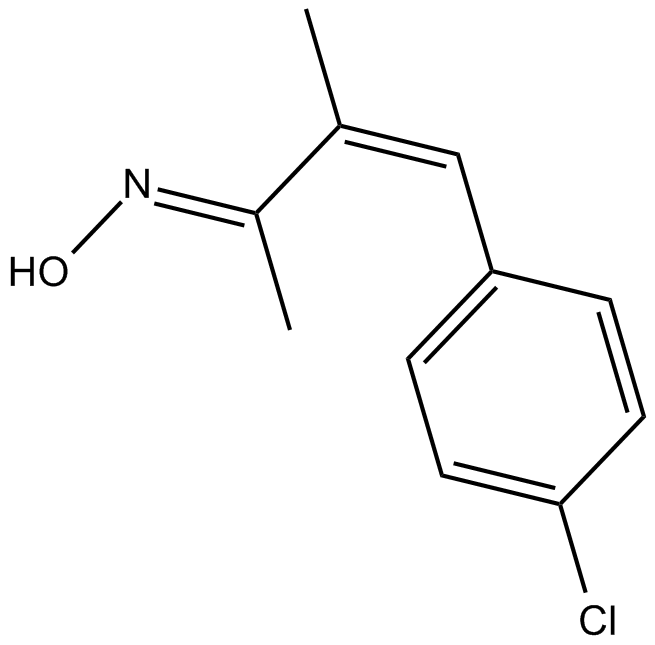AP 18 |
| Catalog No.GC18020 |
Reversible TRPA1 channel blocker
Products are for research use only. Not for human use. We do not sell to patients.

Cas No.: 55224-94-7
Sample solution is provided at 25 µL, 10mM.
AP-18 is a selective channel blocker which can reversibly inhibit TRPA1 of human and mouse with IC50 of 3.1 µM and 4.5 µM, respectively.
TRPV1 belongs to the transient receptor potential family of cation channels and is activated by low pH, heat, and capsaicin. Originally known as a noxious cold-activated ion channel, TRPA1 is expressed in the same sensory neurons as TRPV1 and is activated directly by a variety of chemicals via covalent modification, and indirectly through G-protein coupled receptors.
In odontoblasts, AP18 is effective to inhibit the increase in intracellular Ca2+ concentration induced by allyl isothiocyanate and cinnamaldehyde (the TRPA1 agonists) 1.
In vivo, AP-18 blocks the transient receptor potential ankyrin 1 receptors and can reduce chronic pain associated with arthritis. This product is also capable to induce cinnamaldehyde-induced nociception and to block cold- and mustard oil-induced activation of mouse TRPA1 but not capsaicin-induced activation 2. In addition, AP18 treatment reversed CFA-induced mechanical hyperalgesia in mice 2. Thus, TRPA1 is essential for sensitization of nociception.
References:
1. Egbuniwe O, Grover S, Duggal AK, et al. TRPA1 and TRPV4 activation in human odontoblasts stimulates ATP release. Journal of dental research. 2014;93(9):911-917.
2. Petrus M, Peier AM, Bandell M, et al. A role of TRPA1 in mechanical hyperalgesia is revealed by pharmacological inhibition. Molecular pain. 2007;3:40.
Average Rating: 5 (Based on Reviews and 23 reference(s) in Google Scholar.)
GLPBIO products are for RESEARCH USE ONLY. Please make sure your review or question is research based.
Required fields are marked with *




